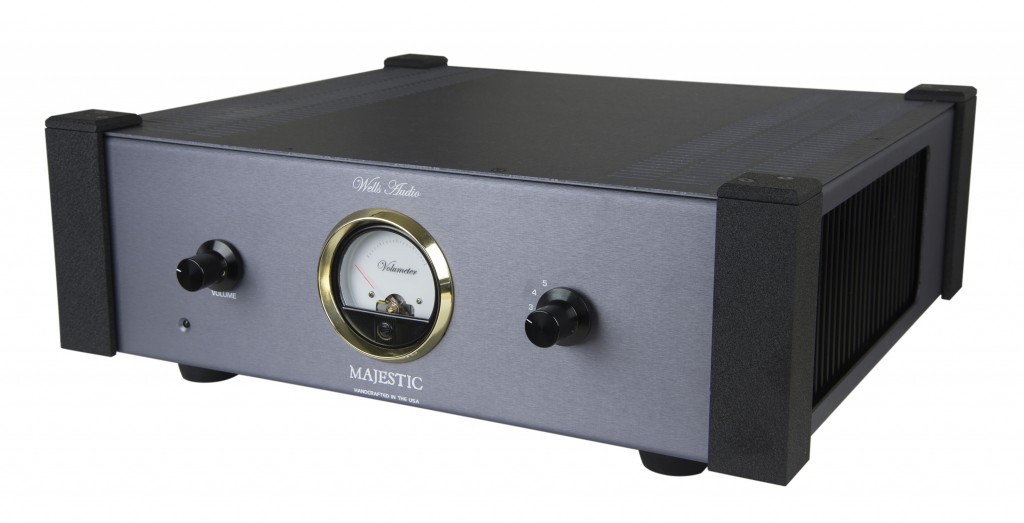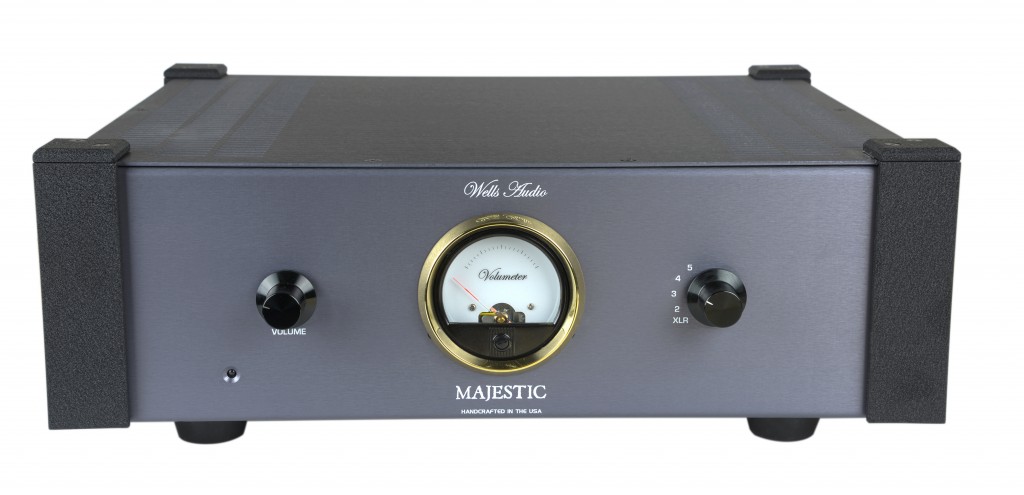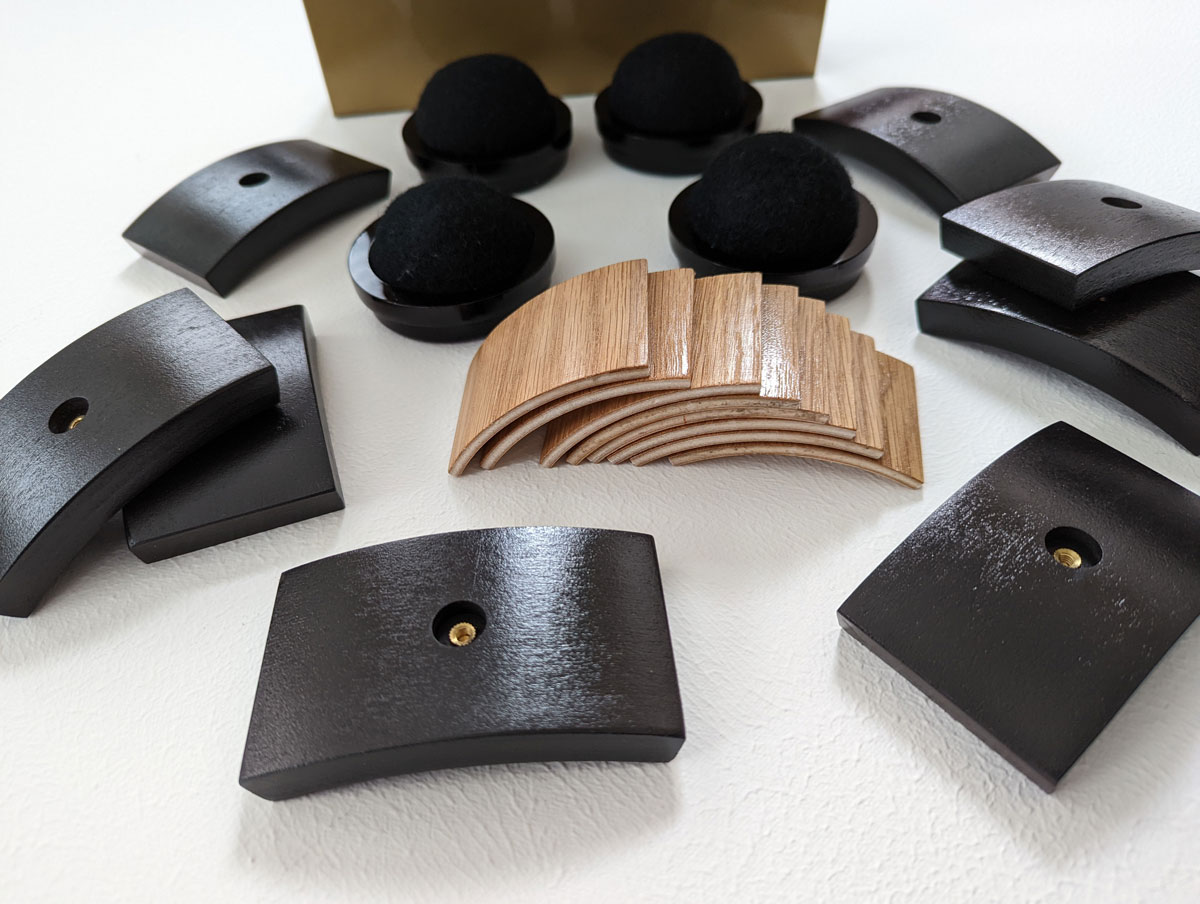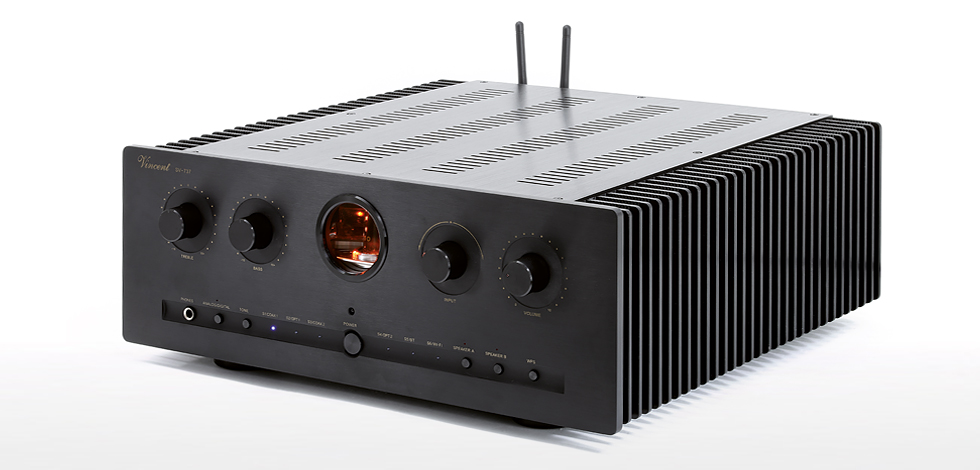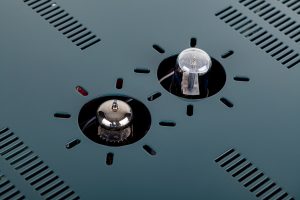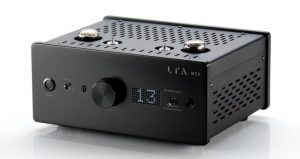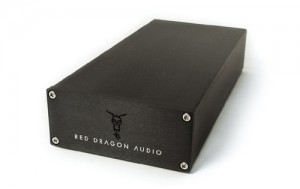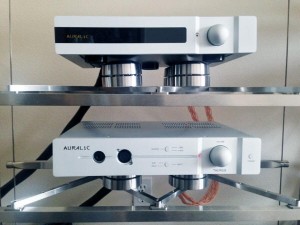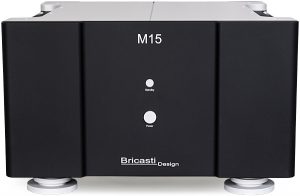I'm not going to tell you what I did on my summer vacation. (Maui) I'm not going to tell you what I got for Christmas. (Schiit Audio Vali 2). I am going to get right to the crux of the matter and tell you about the Wells Audio Majestic integrated amplifier.
A few audio shows back, I walked into the Wells Audio room at the Show Newport and met owner Jeff Wells. Among the array of products in that room I saw two of the most beautifully built, finely engineered, and greatest sounding headphone amplifiers I have ever had the pleasure to use. Fast forward to a few months ago, and I was fortunate enough to get the chance to review a relatively new product in their line up; the Majestic integrated amplifier. But lets back up a bit. Who and what is Wells Audio? Back in the eighties, while most of us were getting shocked at the first Poison album cover, or going to see the first Predator movie, Jeff Wells was starting to hone the audio talents that would eventually lead to the formation of Wells Audio. The partnering of he and "a few brilliant friends" has brought the amplifier designs they now give to the world. Wells Audio amplifiers are made in the USA; a fact I am sure that would warm the hearts of some of our current presidential candidates. I know it does mine.
All Wells Audio amplifiers are solid-state designs. The Majestic is the only integrated amplifier in their line up. According to their website, ..." the Majestic was not designed as a compromise... " The objective was what it always has been at Wells Audio, to build the very best sounding audio equipment in the world despite the cost or design limitations." A bold statement one might say. Ah but have you seen, touched, or listened to a Wells audio product? One more quote from their website reads, "the Majestic is well equipped, but it is not designed to be a Swiss Army knife." I love that quote. With that, let's look at what features this amp has in order to deliver the goods.
The Majestic is equipped with just enough specifications and socketry to get the job done. It has 150 WPC into 8 Ohms, S/N -103dB, gain 30dB, and a damping factor of 200. It is equipped with 4 pairs of solid unbalanced inputs, one pair of XLR unbalanced inputs, and one fixed RCA output. There is also one pair of five way binding posts per channel. The unit measures 17W x 5H x 16.5D and weighs in at a respectable 35 pounds. The volume and input knobs are sleek and functional designs. The power switch is located underneath the front panel just left of center. The visual treat on the front panel is the volume meter. This is a very trick feature, and is said to, "Match the movement to the manual volume control to let the listener better visualize where he is at on the gain scale." Rather bright LEDs within the meter light up when the amp is on. The supplied remote control is a 3 1/2 x 2 inch affair that took me some practice getting used to. There are 13 buttons on it, but only the four buttons on the left are used to operate the amp. The commands are volume up/down, mute, and standby. I found this little gadget awkward to use—even after several weeks of using it. Ham-fisted I may be, but the slim remote on my Wyred4Sound Mpre is much more intuitive and easier to use, and controls volume and input. And yes I have lost this little flat rectangle of a remote many times in-between the folds of my couch. One more quote from their manual seems appropriate here, "All other buttons on the remote have been disabled for your protection." Yeah I know I am probably the only guy that would complain about the finish on a shark cage, but that is just me. I didn't like this remote! The finish on the amp, on the other hand, is a very nice looking textured black/blue color with black accents, and done up with plenty of louvers for heat dissipation. Now that I liked. The price for all of this finery is a reasonable $3499.
The Majestic slipped into my system of Analysis Plus cabling, the Marantz SA15S2 CD player, and of course the Marantz PM15S1 integrated amplifier—which is a Swiss army type amp—and my Fritz Morel 6 speakers. I was also lucky enough to get a new pair of Fritz speakers, which are what I used for the remainder of the review (that review to come). Both the Marantz units have the Signature modifications by The Upgrade Company. These modifications elevated these units to quite a substantial level making them competitive with gear many times their cost. I occasionally used the DAC section of the Wyred4Sound Mpre to very good effect. All units were set on some Herbies Audio Labs Tenderfeet.
For this review I listened to mainly CDs and many Blue Ray and DVD disks of varying quality. I also used my Kuzma Stabi/Stogi/Clearaudio Wood cartridge, though at first but wasn't able to get rid of a ground hum. For the critical part I focused on some older, very well recorded material. These are titles I have collected along the way. The recordings are very good and help to more easily recognize the musical qualities of the amp; such Ana Caram on Chesky records, Music From Peter Gunn, Living Stereo on Buddha Records, and Claudia Gomez on Clairity records. My millennial son doesn't know what a 409 is. He doesn't know what a 327 is. For God's sake, he doesn't know what a three on the tree or a four on the floor is. That is until I enlightened him. On the opposite end of the universe, and in a similar way, I don't do downloads. I know, cave man, the Gorilla behind the computer. I may be reminiscent of Ben Stiller and Owen Wilson, but the thought of a computer hooked up to my system and going through the many motions just to put on some music, well I'm not there yet. So it is physical media for this review. Besides, what is the first thing they do in the movies when they want to play some music? Put on an LP!
I was told this amplifier was already broken in, so I went right to work. The first thing I noticed with this amplifier's sound was the detail. But it is not bright, etched, or over analytical detail. It is slightly sweet, rounded, and polished natural detail. This is the kind of characteristic that is a part of the whole musical presentation; one that draws you into the music. It does not overwhelm you with dry information. Individual sounds of instruments are clear and distinct with quick, clean dynamics, yet gel with the whole musical content. For instance on track 7 on the Claudia Gomez title, when the cymbals are struck the sound just sweetly billows out into my room, yet micro details are not missing. Instruments are not spotlit, but come off as a whole band. Bass and dynamics on this track sounded taut, textured, very clean and balanced. My notes read, grain-less to a fault.
A favorite release of mine, and one that brings back fond memories, is the Music From Peter Gunn on Living Stereo with Henry Mancini at the helm. Once again, the Majestic worked like a magnet, drew me into the music with the dynamic swings and swells of the orchestra sounding relaxed and inviting, yet solid and full. This title displays a solid dynamic foundation that is natural sounding and just plain fun to listen to through this amp. The dynamic qualities this amp reproduced here were fantastic. The music is as wide open and as spacious as I have ever heard this disc sound in my system.
Going back to track 6 on the Claudia Gomez CD, and the percussion sounds exceedingly natural. The timbre of her voice is very inviting. The electric guitar on this track just sounds more realistic and full bodied than I have heard this this music sound before. Again, images sound clear and distinct, yet the music sounds whole. I heard absolutely no smearing of notes. These qualities were carried over to an old chestnut, George Winston's Autumn. Yes I dug deep in my collection for this one. Notes from his piano sounded quick and clean as usual but full, spacious, and dynamic as all get out. Dynamic shifts were handled effortlessly and helped make for a very believable listening experience.
The Janaki String Trio's debut CD on Yarlung Records has some very exciting music. I especially enjoy track 1, the "Penderecki String Trio." The natural timbres and textures of the music the Majestic reproduces on this CD is amazing. Once again, I was very easily drawn into the performance.
Integral to this review was the comparison I did with my Marantz PM15S1 integrated amplifier. The PM15S1 is from Marantz's Reference Series of a few years ago. Never one to let things be, I sent this amp off to The Upgrade Company in Michigan to have their Reference Signature Modification. This upgrade was nothing short of remarkable. Musicality, transparency, and dynamics are now on a level that the stock Marantz will never be able to match. My PM15S1 Reference Signature held its own with the Majestic, but with its own twist on the music. After a while I started to notice the differences between these two amplifiers. For instance on track 7, again of the Claudia Gomez CD, the Marantz showed the cymbals to have a tad more metallic sound. As with the Majestic, cymbal splashes sounded very billowy and the soundstage was very spacious and dimensional. Dynamics are very fast and clean. Tonally the Marantz is a bit more "lit up" in the upper regions with a slight emphasis on "S" sounds. It is a little whiter sounding as opposed to darker. On track 1 on the Peter Gunn CD, the Marantz came off as a little uptight sounding compared to the more inviting and relaxed nature of the Majestic. The Majestic also reproduced cleaner separation of instruments, and the horns sounded more realistic on the Gunn CD. Although the Marantz is fast, clean, and musical in its own right, that last little bit of difference is enough to distinguish each amp. I thoroughly enjoyed the Janaki String Trio through the Marantz amp; it sounded dynamic, rich, and spacious. Its slightly more lit up nature served this music well.
After many hours of listening and switching amps, I felt that the warm, polished, inviting, almost tube-like presentation of the Majestic was slightly obscuring my ability to hear into recordings as easily as I could with the Marantz. As transparent and clean as the Majestic is, with the Marantz it is just a little easier to hear further into the music. It is not a deal breaker. The Majestic is a very resolving amplifier. This was evident when I put on some less than stellar recordings as well as the good ones. But it was there.
But look what I had to do achieve that performance with the Marantz. I had to buy an amp in perfectly good working condition, get it modified, and trust that I am going to like the modifications when I haven't heard them yet, and pay for all of this upfront. Of course the manufacturer's warranty goes out the window (the Upgrade Company provides their own). And reselling modified gear is harder than selling stock gear. Fortunately for me it worked out for the better. But with the Wells Audio Majestic you have a high quality high-end package that you can just buy and is literally just plug and play... and sounds great from the get go.
Most modern audio amplifiers are competently designed, well engineered products. But once in a while an amplifier comes along that defies expectations in circuit design and sound quality. I haven't explored the circuit design of this amplifier, but I have had quite a bit of listening experience with this amp. In fact, who was it that said that a competently designed amplifier, be it solid-state or tube, should sound indistinguishable? The Majestic displays tube qualities of natural timbres, dimension, and a grain-less and somewhat sweet top end. But it is a solid-state amp. It has very impressive dynamics and a solid grip on the music, and yet is not euphonic or sterile. So did Wells Audio reach their objective "to build the very best sounding audio equipment in the world despite the cost or design limitations"? I think they came very close with this design.
In this review I have tried to rein back the audiophile superlatives and hyperbole. I wanted to write about what I heard when this amplifier was in my system. Just the facts mam, as Joe Friday used to say. But I quickly found out that was very hard to do. The problem is, one can talk about transparency, pace, soundstage, and detail all day long. Heck you could use those words to describe the sound of my $400 Marantz PM5004 integrated amplifier. But with the Majestic, it transcends the bounds of audiophile technical description of sound. It has the ability to draw you into the music easily and consistently and make you forget about words. And when was the last time that was a bad thing?
Majestic Integrated Amplifier
$3499
Wells Audio
106 Bascom Ct.
Campbell, Ca. 95008
408.376.0861




